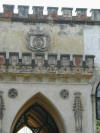Juraj Mičura
A national activist, lawyer (born 18.11.1851 Dlhé Pole, district Žilina - died in Těšín 22.3.1919, buried in a Dlhé Pole). Father Ján Mičura, mother Dorota, born Kudelčíková. Wife Sidónia born Rovnianek (as a widow lived with sisters from Stefan II. Ondrejkovič).
Viliam Paulíny-Tóth, son of the Protestant pastor was 1847-1848 professor at the Lyceum in Kremnica. At that time he published the political file "The Age of Freedom". He was the captain of the Slovak volunteer corps. After 1849 he worked in state services at the county office in Trenčín and as the Chief Servant in Veľká Bytča. Since 1853 was the county commissioner in Kecskemét. In 1855 he received a nobility title after marriage and he joined the surname of the wife of Vilma Tóth de Tőre et Tóthmegyer, a relative of Anna Ondrejkovič born Sandor de Szlavnicza through her father Trencin County Judge (Janka Sandor de Szlavnicza, whose father was Michael Baron Sandor and mother Anna Kubicza married János Tóth of Esztergom Diocese, married by a considerable dowry).
The Upper Tatra Bank was established in 1884 in Turčiansky Sv. Martin. At the birth of it stood, among other things, the capital, which was acquired by the marriage of William Pauliny-Tóth.
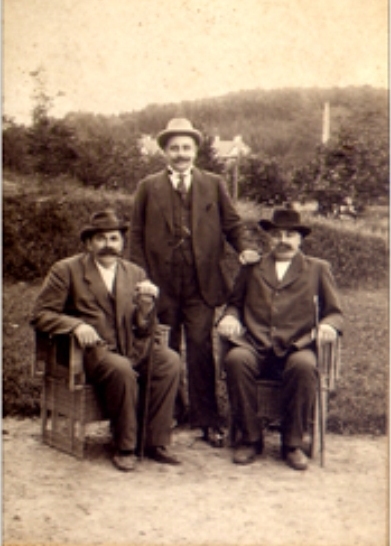
On slide Dr. Martin Mičura with his father Imrich Mičura and uncle lawyer Juraj Mičura
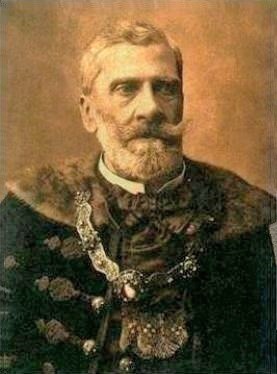
Vicežupan Koloman Beniczký pokrvne príbuzný trenčianskeho župného sudcu Stephana Sandora de Szlavnicza, svokra Obvodného notára Stefana I. Ondrejkoviča. Trenice sa dotýkali obsadenia miesta riaditeľa Tatra banky a predsedníctva dozorného povereníctva. Pozri Národné noviny XX (1889), č. 43 a 44, kde prebehla kontraverzia medzi vtedajším riaditeľom Tatra banky Rudolfom Krupcom a Matúšom Dulom i Andrejom Halašom. Valné zhromaždenie Tatra banky bolo 26. apríla 1889. Riaditeľom zostal Rudolf Krupec. Za predsedu dozorného povereníctva bol vyvoleny Gyorgy Szmrecsányi, za podpredsedu „proti kandidátovi Matúša Dulu a jeho spoločníkov väčšinou hlasov Koloman Beniczký“. (Zprávu priniesli Národné noviny XX (1889), č. 48.).
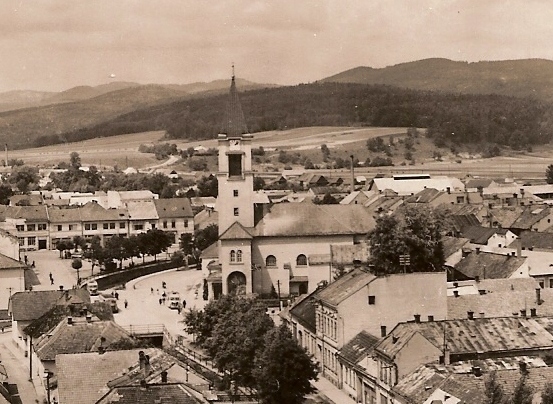
Bytča in 1896 stood for election to the Hungarian Parliament, the Land of the Catholic People's Party. In 1918, the SNR, a signatory to the Declaration Slovak Nation of Martin 30.10.1918.
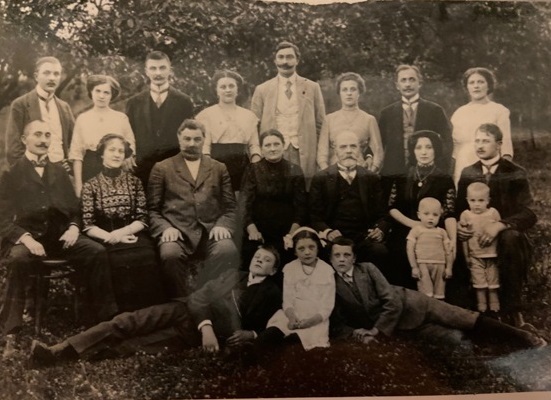
Rozvetvená notárska rodina Ondrejkovič - Sandor s príbuzenskými väzbami so všetkými významnými šľachtickými rodmi trenčianskej a nitrianskej župy v r.1912. Na snímke je aj Obvodný, neskôr Župný notár Rudolf Mičura s manželkou Annou Mičurovou rod. Ondrejkovič, bytčiansky advokát Juraj Mičura a neskorší minister a prezident Najvyššieho súdu SR advokát JUDr. Martin Mičura. Prvý stojaci vľavo je študent PF v Budapešti, neskorší Okresný náčelník Aladár I. Ondrejkovič, v strede sedí Sp. Da Anna Ondrejkovičová rod. Sandor de Szlavnicza a jej manžel Obvodný notár Stephan I. Ondrejkovič (v trenčianskej župe najúspešnejší organizátor volieb do jej zastupiteľstva), vedľa učiteľka Mária Anna Turba a jej manžel Správca učiteľ Stefan II. Ondrejkovič s ich synčekmi Stephanom III. a Aladárom II. Na snímke je aj so svojou manželkou Máriou rod. Ondrejkovič, nad svojou sestrou aj notár Stefan Turba, neskorší riaditeľ pôšt na Slovensku a mešťanosta Bratislavy. Dolu sú chlapci Jozef Ondrejkovič a Ľudovít Ondrejkovič so svojou sestrou Lenkou. Obaja padli vo Veľkej vojne.
Juraj Mičura studied at a grammar school in Esztergom, studied law at the Law School in Bratislava. Lawyer in the town Bytča. Co-national and cultural life in and around the Bytča, praxis him several representatives of the Slovak public and cultural life (Martin Mičura nephew, Janko Jesenský, Vladimir Pivko, Jozef Hranec).
Literature: Podrimavský, M.: Slovak National Party in the second half 19.century. Ba 1983, s.151; History of Slovakia 4th Ba 1986; s.198; Obituaries: National newspaper, 50, 12.4.1919, p. 5; Legal skyline, 2.1919, No.1-3, p. 27-28; Archive Bio MS (extract from the registers) . Slovakia Encyclopedy A-Z ; JUDr. Ján Mikula " Uprising with legend " ; Col. Aladár Ondrejkovič; Sidónia Hutárová ; Gizelle Kerney ;
Priest Michael Balažovič (allied families Turba) born in Veľké Bielice on 16.09.1885 (father Ján Balažovič) graduated from high school in Nitra, 1899-1903, 1903-1907 theological studies ibid. Was ordained priest in 1908. Kaplan Predmier, Novak, Kysucké Nové Mesto and Dlhé Pole (from 1.7.1914). Military service 1915-1917. Since 1919, the administrator Klátová N. Ves, 1921 in Stará Bystrica chaplain from year 1922 extra services.
After 1918 it was the political status of Mičura family significantly strengthened to marriage of Anna Ondrejkovič, the daughter (granddaughter of Trenčín county Judge Stefan Sandor de Szlavnicza) of a notarial largest family of Nitra and Trencin County with the District notary Rudolf Mičura.
National newspaper November 27, 1918. New Slovak robe. From a reliable source, we learn that for Šarišs the appointed Comes is Dr. Pavel Fábry, a lawyer and a wartime auditor at the Buda District Command.
From December 12, 1918 in Zilina, in the villa of Edita Bacherová native Milecová and her husband Andrey Bacher, the local bank was ruled by the local bank of the Rožmberok Credit bank, the holding company was occupied by the minister with the power of administration of Slovakia Dr Vavro Šrobár (1867-1950) and his office, the Slovak Government.
After the creation of the Czechoslovakia, lawyer Samuel Daxner de Tótzabar was a political companion of District Notary Štefan Ondrejkovič and lawyer Juraj Mičura in national matters, and was appointed to the position Comes of Gemer-Malohont county. Here he oversaw the seizure of power on its territory by the Czechoslovak authorities and the army.
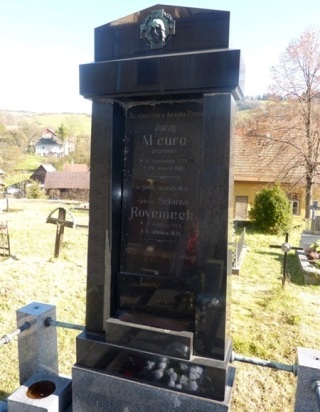
Náhrobný kameň bytčianskeho advokáta Juraja Mičuru a jeho ctenej manželky pani Sidónie Rovnianek v obci Dlhé Pole, okres Žlina.
Pandémia, španielska chrípka zdecimovala populáciu Európy a sveta na začiatku 20. storočia viac ako 1. sv. vojna v jej závere v r.1918. Neutrálne Španielsko vyšlo s informáciu o epidémii v roku 1918 prvé. Rakúsky lekársky historik Harald Salfellner upozorňuje na možný zdroj chrípky z Číny. Tu v roku 1917 vypuklo onemocnenie dýchacích ciest, ktoré sa po krátkej chorobe končilo zápalom pľúc. So 140 tisícmi čínskych robotníkov, ktorí mali podporovať Britov vo vojne, sa nákaza cez USA dostala do Európy. Nákaza v roku 1918 postihovala vojakov na frontoch, v lazaretoch, zajateckých táboroch aj civilistov. Správy, ktoré domov prinesli čs. légionári a zajatci zo Sibíri poukazujú aj na ďalšiu trasu šírenia španielskej chrípky a škvrnitého týfusu. Po separátnom vystúpení Ruska z vojny 3. marca 1918 mnohí navrátilci Trojspolku zo zajatia v Rusku boli už chorí a po tisícoch umierali. Aj légionári a Hlavný súdny oficiál Gejza Turba priniesli domov okrem potencionálnej nákazy správy a dôkazy s fotografiami početných komunít výhradne bielo zaodetých Čínanov (zaoberajúcich sa živnosťami v službách - vývarovne, práčovne atď.) na železničných staniciach miest pozdĺž celej Transsibírskej magistrály ktorí zo dňa na deň zmizli.
Lode tiež cez prístavy roznášali po svete pandémiu, ktorá na jeseň priniesla smrť miliónom, ustúpila až po konci prvej svetovej vojnyv r.1918. V roku 1919 sa vrátila. Španielska chrípka doznela až v roku 1920. Ochorelo 500 až 600 miliónov ľudí, tretina svetovej populácie. Odhady smrteľných obetí sa rôznia – od počtu, ako bolo mŕtvych v prvej svetovej vojne 17 miliónov po 100 miliónov. Salfellner odhaduje počet obetí v Rakúsko-Uhorsku na 185-385-tisíc, okolo pol percenta populácie. Vznik a priebeh pandémie španielskej chrípky sa kryje s epidémiami škvrnitého týfusu, ktoré prinajmenšom rovnako postihli vojakov a civilné obyvateľstvo. Na Slovensku až do roku 1921. Štatistické čísla z Veľkej Británie uvádzajú, že počas prvej chrípkovej vlny umrelo desať percent chorých, druhej na jeseň 1918 až dve tretiny a na jar 1919 štvrtina chorých. Pri boji so španielskou chrípkou sa začali uplatňovať opatrenia známe zo súčasnosti. Napríklad v októbrovej vlne v roku 1918, keď vo Viedni úmrtnosť v porovnaní s predchádzajúcimi chrípkami narástla o 300 percent, úrady vyzvali obyvateľov, aby sa vyhýbali kontaktu s chorými. Zatvárali sa školy, divadlá, továrne pracovali v obmedzenom režime. Podobne reagovala Budapešť. Pandémia tragicky postihla aj rodiny Ondrejkovič, Sandor de Szlavnicza a Mičura, keď okrem strát životov ich synov na fronoch nákazou a úmrtím Anny Ondrejovičovej rod. Sandor de Szlavnicza, jej dcéry Anny Mičurovej rod. Ondrejkovič s ešte nenarodeným dietaťom aj advokáta Juraja Mičuru.
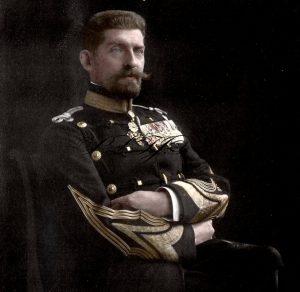
King Ferdinand I of Romania
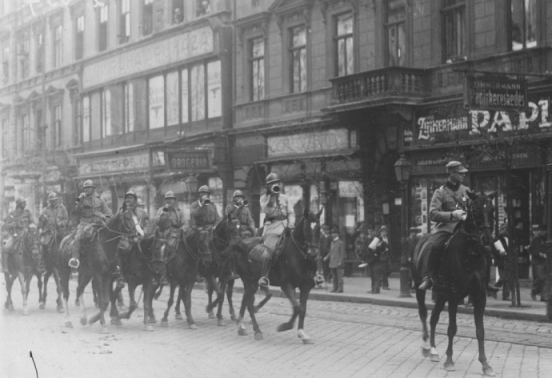
First Romanian troops who stepped in Budapest on the evening August 3, 1919, the three squadron from 6th Cavalry regiment of the 4th Brigade under the command of General Rusescu.
On 6 August 1920, Career Diplomat Constantin Hiott was appointed Special Envoy and Plenipotentiary of the Government of Romania in Prague.
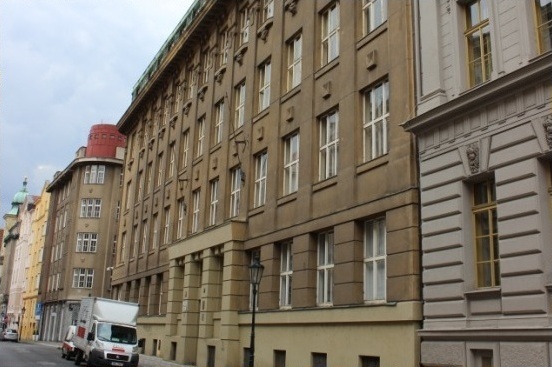
Dr. Karel Baxa was the first President of the Constitutional Court of the Czechoslovak Republic from 17 November 1921 to 5 January 1937. His seat was in Dušní Street 17 in Prague, where the Ministry of Unification, ie the Ministry for the Unification of Legislation and the Organization of Administration in the Czechoslovak Republic, also functioned. Dr. Karel Baxa was a close associate and friend of Mr. Juraj Mičura. He also became related to him by marriage First lieutenant Aladár II Ondrejkovič and Miss Alžbeta Ličková. Attorney Juraj Mičura was an associate in political life and friend from District notary Štefan I Ondrejkovič and Štefan Turba.
The British Red Cross's mission has also focused on fighting epidemics and helping children. At Kysuce, at least 100 brewery and distribution centers have been opened. in Krásne, in Oščadnica, in Turzovka. The local authorities distributed the supplies from the Čs RC warehouse, which they assigned to the British RC Assistance Mission from the donations that Slovakia received from abroad after World War I. These were clothes, bedding and hospital supplies for the hospital in 1,035 offices at a cost of more than CZK 4,000,000. They were also supplying supplies from the central store of clothing and food of the British Red Cross's Assistance Mission, which was located in Žilina, where Edita Bachero's born Milec (1886-1975) also worked, cultural worker and member of the Central Committee of the Slovak Women's Association Živena. She participated in the reorganization of Čs RC branch in Žilina and since 1929 she was chairwoman of Živena in Žlina. Source: Historical Journal, 56, 3, 2008.
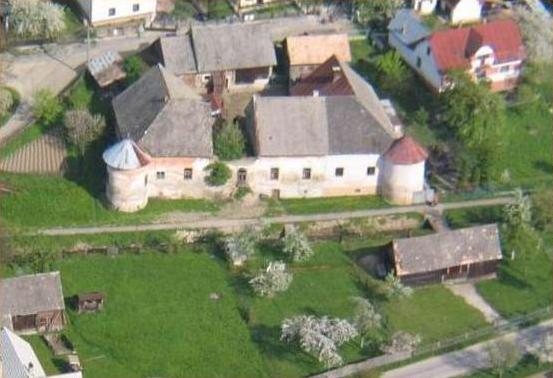
Renaissance mansion in the village Súľov-Hradná. Heyday when he belonged to Mary Madocsányi, wife of Trencin County governor's Paulus Madocsányi (related families Ondrejkovics-Sandor de Szlavnicza). Receptions were held here, guests came all the way from Budapest. In front of the manor house was a pond with a fountain, fish, aquatic plants. In the year 1931 him zahádzali remained after only a marsh. Ms Madocsániy died in 1894 aged 76 years. The manor house bought by Mr. Vincent Mičura. Corrected some walls pulled down. In 1937 from Mr. Micura mansion in parts they bought back.
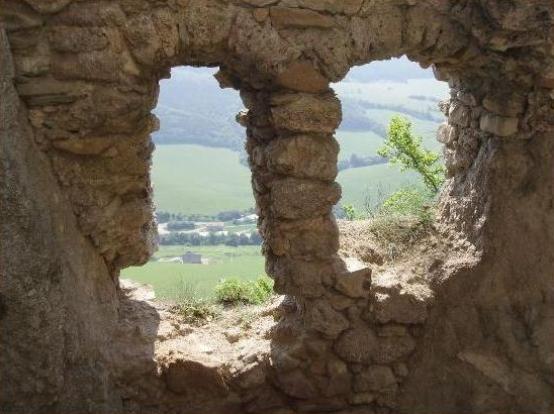
Súľov castle in 1550 donated the ruler Sebastián Siriemsis. He belonged to the family until he did not leave in 1780. One mansion in the castle in 1591 acquired Helena Sirmiensis. It belonged to the 19th century dynasty. In the XIX century it was Charles and Francis Sirmiensis (multiple relatives with the family Ondrejkovics Sandor de Szlavnicza). After the death of Louis, Captain of K.u.K assessor court etc. his wife sold the mansion county council and royal counselor to Louis Akaj. After the establishment of Czechoslovakia assets acquired Tatrabanka from whom it bought Vincent Mičura. Park set aside, Zruc old houses sold rolls sell out part of the land, forests retained. After nationalization in 1948 the family had Mičura Estate transmit to the State. After restitution in 1989 Mičura reconstruct the family mansion.
Palace of Palatine Georgius Thurzo, a family member of Ondrejkovic, among others Married Catherine von Rottal (daughters of Felizitas Thurzo and Jacob von Rottal) with Francis I. Sandor de Szlavnicza from Veľká Bytča.
Married District Notary Rudolf Mičura and Anna Ondrejkovič also got this family in a family relationship with offspring of the genus Thurzo. The widow of Emerich Thurzo, twenty-year-old Christine Nyári (a relative of the Sandor de Szlavnicza family), went on 21 June 1624 for Mikolaus Esterházy, who won the Bytča, which he received from Ferdinand II. Esterházy in 1862 lent to Leopold Popper the manor and the castle. After the origin of the Czechoslovak Republic, he bought a part of the housing estate of JUDr. Martin Mičura.
Lady Muriel Paget at Kysuce. The Revolutionary Slovak National Council was established in Chad on 3 November 1918. The chairman became a well-known scholar Ferdinand Hirš, Vice-Presidents Štefan Beniač and Dr. Robert Poradovsky, the secretaries of Jozef Menkyn and Ľudovít Janota. Local National Committees have been addressing the life of the population since the first day. Women, especially the wives of the National Councils and Committees, organized a voluntary Red Cross service to help returning soldiers, sick and socially weak. The worst situation was in Turzovka, the largest and most disturbed village in Slovakia. The doctor, a non-scholar in tornadoes, and the local officials, the notary Rudolf Mičura, Jozef Brix, priest Točík and Fundarek, major Michalička and others were busy saving lives, considering food, clothes, and so on. Turzovka then came to MUDr. Adolf Staneček and his wife Marina. During this period the Czechoslovak Red Cross and the initiative of Dr. Alice Masaryk and Lady Muriel Paget have made one of the first major helper events in Slovakia. Dr. Alica Masaryk was at that time a deputy of the National National Assembly for Slovakia and at the suggestion of MUDr. Ivan Halko, her friend and others, focused their activities on Kysuce. Help needed the most. So it happened that just 50 years ago, Turzovka became the seat of a relief mission. Old English chemists moved to the Old Pharmacy building from the Lady Muriel Paget Assistance Mission led by Miss Maston. Auxiliary action had to be started on two fronts:
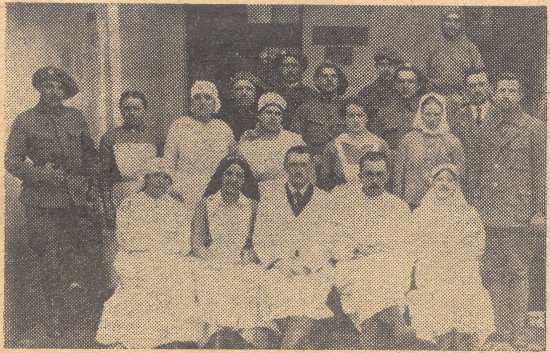
Personál núdzovej nemocnice v Turzovke pri Dlhom Poli. V strede MUDr. Adolf Staneček a Ľudovít Janota.
vybudovaním provizórnej infekčnej nemocnice, ktorú zriadili v budove školy a starostlivosťou o vyhladované a choré deti a ich matky, najmä na kopaniciach. Dni a noci namáhavých služieb v pomocnej misii, starostlivosť o infekciami napadnuté deti - to si vyžiadalo mnoho aj tých najväčších obetí: dňa 30. septembra 1919 umiera na týfus mladá anglická sestra, Margareta McCullum. Onedlho ju 25. októbra 1919 nasleduje aj pani Milka Dudáčková, obetavá dobrovolná pracovníčka misie. Obeťou týfusu sa stáva 13.októbra 1919 aj riaditeľ školy Ignác Ország, ktorý poskytol chorým vojakom pomoc v jeho vlastnej škole. Keď si pripomíname vznik Československého Červeného kríža a jeho päťdesiatročné zdarné účinkovanie, spomeňme si na prvé obete, ktoré vyhasli pri práci na záchrane životov iných. Zdroj: Ľ. Janota, časopis "Zdravie" ročník XXV. November 1969 strany 10 a 11.
.11119_232302_23.jpg)
Prezident republiky T. G. Masaryk a minister s plnou mocou pre Správu Slovenska Dr. Martin Mičura v roku 1921 po plavbe na Dunaji parnou vlečnou nákladnou loďou Váh v pristave Bratislava z vojenskej prehliadky v r.1921 v Petržalke Kopčanoch.
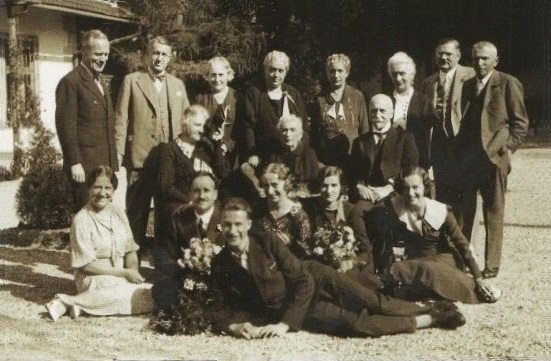
Snímok z oslavy 80-tych narodenín Olgy Milecovej v Troch Dvoroch. Zľava stoja československý a slovenský diplomat Dr. Ivan Milec (Milecz de Tarnó), bankár Igor Pietor, Janka Thomka-Markovická, Oľga Kuzmányová, Hela Kohútová, Margita Paulíny-Tóthová, bankár Andrej Bacher, statkár a zeman Ladislav Thomka-Markovický. Zľava sedia Elena Makovická rod. Pivková, Oľga Milecová rod. Makovická a bankár Vladimír Makovický. Na zemi sedia zľava Eda Bacherová rod. Milecová, vysokoškolský pedagóg a lekár MUDr. Ilja Paulíny-Tóth, Anna Pietorová rod. Milecová, Milena Milecová rod. Slezáková, Tatjana Pietorová. Vpredu leží Igor Pietor ml.
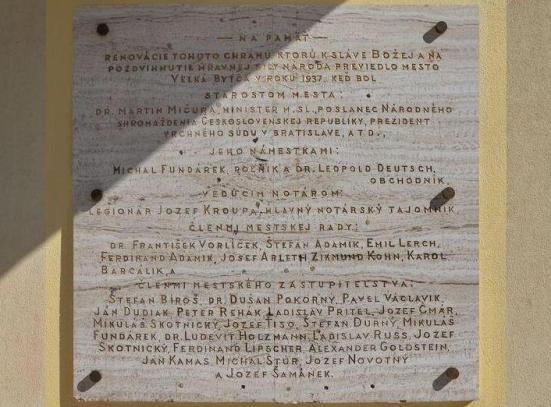
Rímskokatolícky farský Kostol Všetkých svätých vo Veľkej Bytči. Na pamäť renovácie tohoto chrámu, ktorú k sláve Božej a na pozdvihnutie mravnej sily národa previedlo mesto Veľká Bytča v roku 1937, keď bol starostom mesta: Dr. Martin Mičura, minister m. sl., poslanec Národného zhromaždenia Československej republiky, prezident Vrchného súdu v Bratislave, atď. Jeho námestkami: Michal Fundárek, roľník a Dr. Leopold Deutsch, obchodník.
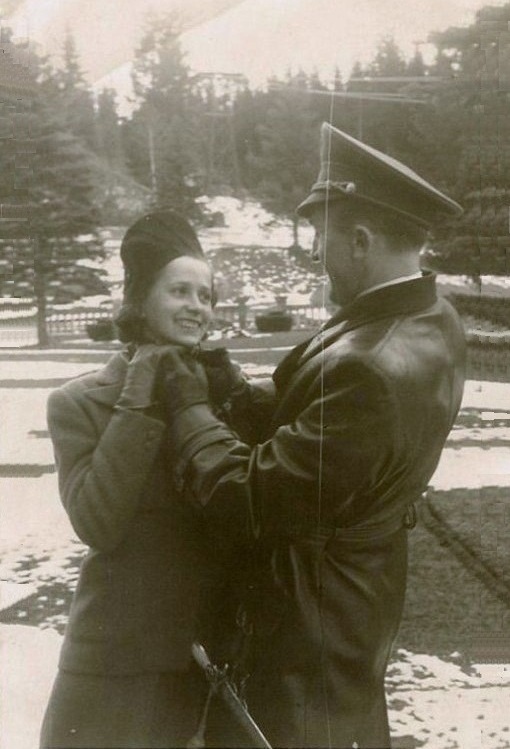
Lady Milena Mileczová (Milecová) genus Slezáková and Lieutenant cavalry Aladár II. Ondrejkovič (pravnuk trenčianskeho župného sudcu Stephana Sandora de Szlavnicza) of family who had with her husband Dr. Ivan Milecz (Milec) friendship, family and professional relationships (mother, Olga Makovický, sister Margita Pauliny-Tóth and Olga Kuzmány). Image of the ball to Serbia 1942 before her husband and emigration, the Slovak ambassador in the Kingdom of Romania and Yugoslavia to Turkey and then to London (with the tasks of the domestic opposition).
Notes: District notary Rudolf Mičura *30.05.1881 Dlhé Pole †02.04.1951 Dlhé Pole ; JUDr. Milan Mičura Malar Magdin 1921-1997 ; Magdaléna Fábry born Vojček 1908-1996 ; Magdaléna Mičurová born Sohlmann ; Katarína Ondrejkovičová born Malár *1926 †1992 ;
Source: Sidónia Hutárová born Haššíková ; Lady Gizelle Kerney born Ondrejkovičová ; Lt. colonel Aladár II. Ondrejkovič ; Nitriansky župan a od septembra 1944 minister obrany Stefan Haššik ;



 back
back 
